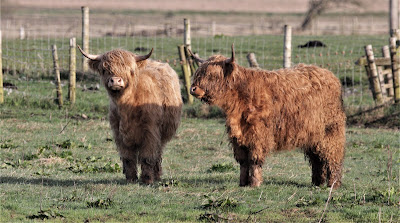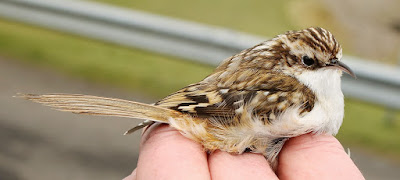Tuesday, March 30, 2021
Too Few Birds
Wednesday, March 24, 2021
Coal To Wales?
Sunday, March 21, 2021
A March Morning
Wednesday, March 17, 2021
Back In The Hills
Above - 2020 at Oakenclough
This morning and for our first time in 2021 we hoped to catch early migrant species such as Goldcrest, Chiffchaff and Meadow Pipit. (“Mipits” as they are named by students of visible migration.). Mipits have been migrating north this week - see Arnside and Silverdale Blogspot.
With luck today we might expect to also capture both Lesser Redpolls and Siskins, two species strangely absent during 2020.
I met Andy at the unearthly hour of 0600 in the half light of a dull cloudy morning. We left at 1130 after a rather slow session and 18 birds caught: 9 Goldfinch, 4 Meadow Pipit, 2 Robin, 1 Dunnock, 1 Chaffinch and 1 Long-tailed Tit.
Although we caught four Meadow Pipits their northward movement was far from obvious, best described as a “dribble” of some 15/20 individuals all morning. Meadow Pipits' diurnal migration in spring takes place from mid March through to mid April and often takes place high in the sky, out of range of human vision; almost certainly, our 15/20 was an underestimate of true numbers, even at this, the early days of their migration.
It was good to see Goldfinches again, a species difficult to find of late. Unlike most years, Goldfinches have been absent from my own garden for months, returning only in the last week or so. So too Greenfinches, already prospecting our conifers where they nested last year.
Today's Dunnock, a first winter female, still carried last year's tail. The tail bore evidence of a period of poor nutrition during the nesting period of 2020.
Even in the hand a Robin will display their red breast to best effect in case the ringer is a rival.
If Lesser Redpolls and Siskins were around today, we didn't see or hear any. Nor Chiffchaffs or Goldcrests. All the more reason to try again soon.
Linking today to Eileen's Blogspot and Anni in Texas.
Sunday, March 7, 2021
Comings And Goings
.






















































.jpg)












